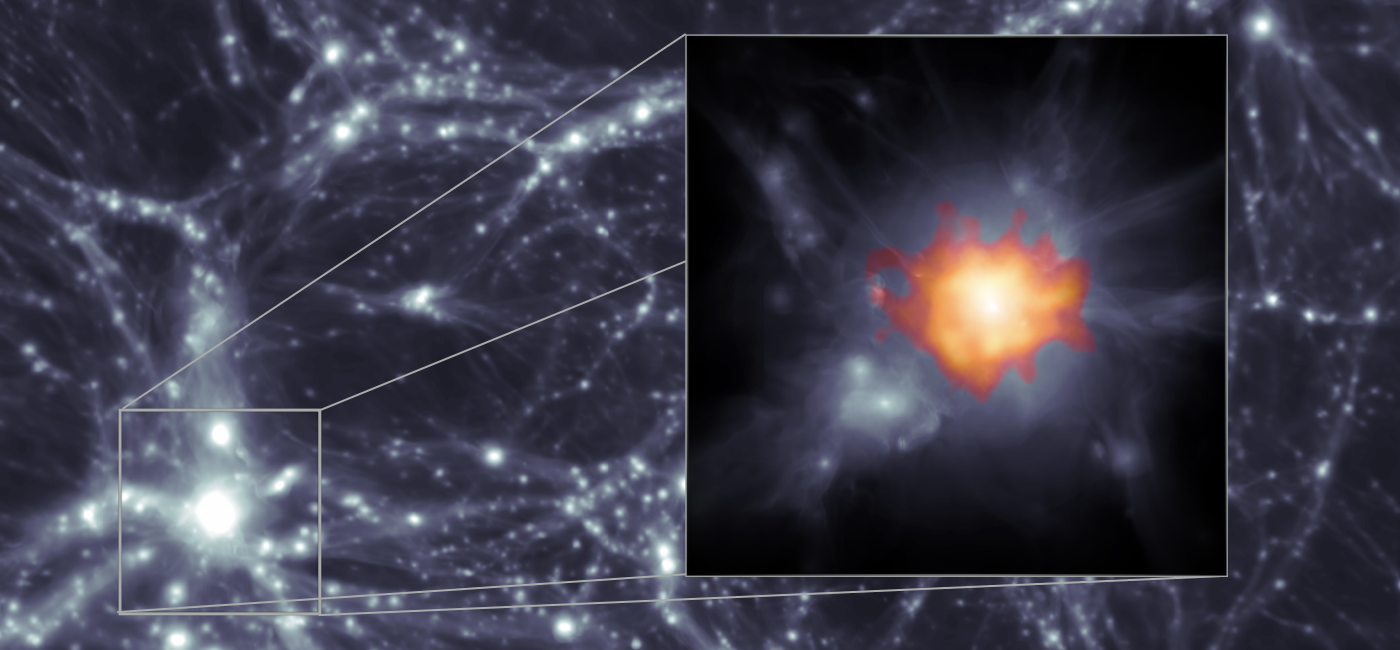Symposium S5
3-4 July 2024
From Galaxy Clusters to the Cosmic Web in the era of Large Radio Surveys
Aims and scope
 In recent years, rapid technological advances in both computational techniques and instrumentation (including the construction of novel interferometers) have revolutionized our view of the radio-emitting Universe. Thanks to the advent of novel facilities such as LOFAR, uGMRT, MWA, ASKAP, and MeerKAT our ability to detect and study cluster-scale radio sources greatly increased and it will increase even further with the advent of SKA. Wide and sensitive radio surveys have started to probe the large scale structure around galaxy clusters, revealing magnetic fields and relativistic electrons up to the cosmic web scales. In 2022 radio megahalos have been found surrounding galaxy clusters out to their virial radius, just two years before radio bridges were discovered between premerger pairs of galaxy clusters, and in the same period the most stringent constraints on magnetic fields in the cosmic web have been obtained. These discoveries place modern radio surveys in a privileged position to trace the plasma in the large scale structure including the elusive Warm Hot Intergalactic Medium, constrain the acceleration processes responsible for the radio synchrotron emission, and constrain the origin of magnetic fields in the Universe.
In recent years, rapid technological advances in both computational techniques and instrumentation (including the construction of novel interferometers) have revolutionized our view of the radio-emitting Universe. Thanks to the advent of novel facilities such as LOFAR, uGMRT, MWA, ASKAP, and MeerKAT our ability to detect and study cluster-scale radio sources greatly increased and it will increase even further with the advent of SKA. Wide and sensitive radio surveys have started to probe the large scale structure around galaxy clusters, revealing magnetic fields and relativistic electrons up to the cosmic web scales. In 2022 radio megahalos have been found surrounding galaxy clusters out to their virial radius, just two years before radio bridges were discovered between premerger pairs of galaxy clusters, and in the same period the most stringent constraints on magnetic fields in the cosmic web have been obtained. These discoveries place modern radio surveys in a privileged position to trace the plasma in the large scale structure including the elusive Warm Hot Intergalactic Medium, constrain the acceleration processes responsible for the radio synchrotron emission, and constrain the origin of magnetic fields in the Universe.
In this symposium, we want to focus on the capabilities of present and future radio surveys in discovering the physical properties of the large-scale structure of the universe, from cluster outskirts up to the cosmic web. Therefore our goals are:
- Present the recent discoveries in detecting emission from galaxy clusters and the cosmic web with radio telescopes.
- Disseminate the most promising techniques that have been developed to detect and study the radio emission and magnetic field from the cosmic web
- Discuss the most recent discoveries in the framework of present theoretical models for particle acceleration and magnetogenesis.
Finally, to close the circle, we need to bridge radio observational findings with upcoming large surveys at complementary wavelengths. We plan therefore to:
- Explore the synergies among large on-going and future radio surveys and between radio surveys and surveys at other wavelengths such as those performed by eRosita in X-ray and Euclid in optical.
Image credits: Cuciti et al. 2022 Nature 609 911, Vazza et al. 2011 A&A 529 A17
Programme
- Session 1: Mapping the largest scales with radio data
- Session 2: Large samples from current and future radio surveys
- Session 3: Observational and computational techniques to explore the cosmic web
- Session 4: Simulating the signal of the largest scales: RM, shocks and turbulence
- Session 5: Synergies with other wavelengths and among new radio instruments
- Session 6: Upcoming results (session reserved for PhD to show their work)
Invited speakers
- Virginia Cuciti - Bologna University and INAF IRA
- Reinout van Weeren - Leiden University
- Chiara Stuardi - INAF IRA
- Tessa Vernstrom - ICRAR (TBC)
- Takuya Akahori - NAOJ and SKAO
- Esra Bulbul - MPE
- Dominik Schwarz - Bielefeld University
- Christopher Riseley - Bologna University and INAF IRA
Scientific organisers
- Annalisa Bonafede - Bologna University (chair)
- Francesco de Gasperin - INAF (chair)
- Marcus Brüggen - Hamburg University
- Stefan Duchesne - CSIRO
- Gabriella Di Gennaro - Hamburg University
- Tom Jones - University of Minnesota
- Ruta Kale - NCRA
- Kenda Knowles - SARAO
Contact
eas2024.ss5 @ gmail.com
Updated on Wed Mar 13 10:21:12 CET 2024
|